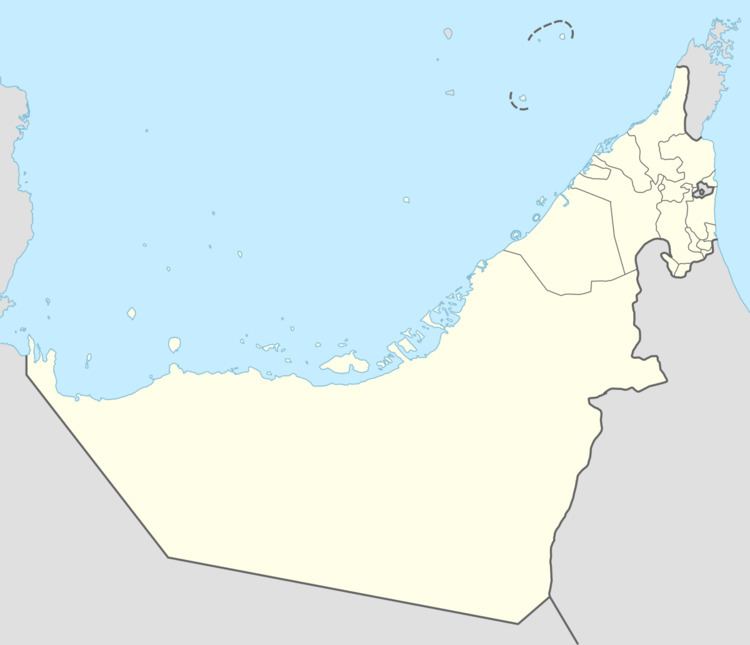Location Abu Dhabi, U.A.E. Branch/tradition Sunni Islam (Malikite) Architectural type Mosque Height 115 m Architect Yusef Abdelki | Affiliation Islam Ownership Government Groundbreaking 1996 Opened 20 December 2007 | |
 | ||
Address Sheikh Rashid Bin Saeed Street، 5th St - Abu Dhabi - United Arab Emirates Architectural styles Mughal architecture, Moorish architecture Similar Ferrari World Abu Dhabi, Yas Island, Emirates Palace, Yas Island Marina Circuit, Grand Mosque Profiles | ||
Sheikh Zayed Grand Mosque (Arabic: جامع الشيخ زايد الكبير) is located in Abu Dhabi, the capital city of the United Arab Emirates, and is considered to be the key site for worship in the country.
Contents
The project was launched by the late president of the United Arab Emirates (UAE), Sheikh Zayed bin Sultan Al Nahyan, who wanted to establish a structure that would unite the cultural diversity of the Islamic world with the historical and modern values of architecture and art. His final resting place is located on the grounds beside the same mosque. The mosque was constructed from 1996 to 2007. It is the largest mosque in the United Arab Emirates. The building complex measures approximately 290 m (960 ft) by 420 m (1,380 ft), covering an area of more than 12 hectares (30 acres), exclusive of exterior landscaping and vehicle parking.
As the country's grand mosque, it is the key place of worship for Friday gathering and Eid prayers. During Eid it may be visited by more than 41,000 people.
Sheikh Zayed Grand Mosque Center (SZGMC) offices are located in the west minarets. SZGMC manages the day-to-day operations, as a place of worship and Friday gathering, and also a center of learning and discovery through its educational cultural activities and visitor programs.
The library, located in the northeast minaret, serves the community with classic books and publications addressing a range of Islamic subjects: sciences, civilization, calligraphy, the arts, coins and includes some rare publications dating back more than 200 years. In reflection of the diversity of the Islamic world and the United Arab Emirates, the collection comprises material in a broad range of languages, including Arabic, English, French, Italian, Spanish, German and Korean.
Design
The Sheikh Zayed Grand Mosque's design and construction "unites the world", using artisans and materials from many countries including India, Italy, Germany, Egypt, Turkey, Morocco, Pakistan, Malaysia, Iran, China, United Kingdom, New Zealand, Republic of Macedonia and United Arab Emirates. More than 3,000 workers and 38 renowned contracting companies took part in the construction of the mosque. Natural materials were chosen for much of its design and construction due to their long-lasting qualities, including marble stone, gold, semi-precious stones, crystals and ceramics. It was built by the Italian company Impregilo.
The design of the Sheikh Zayed Mosque has been inspired by Persian, Mughal, and the Alexandrian Mosque of Abu al-Abbas al-Mursi Mosque in Egypt, also the Indo-Islamic mosque architecture, particularly the Badshahi Mosque in Lahore, Pakistan being direct influences. The dome layout and floorplan of the mosque was inspired by the Badshahi Mosque. Its archways are quintessentially Moorish and its minarets classically Arab.
Dimensions and statistics
The mosque is large enough to accommodate over 40,000 worshippers, while the main prayer hall can hold over 7,000. There are two smaller prayer halls, with a capacity of 1,500 each, one of which is the women's prayer hall.
There are four minarets on the four corners of the courtyard which rise about 107 m (351 ft) in height. The courtyard, with its floral design, measures about 17,000 m2 (180,000 sq ft), and is considered to be the largest example of marble mosaic in the world.
Key architectural features
The Sheikh Zayed Grand Mosque has many special and unique elements: The carpet in the main prayer hall is considered to be the world's largest carpet made by Iran's Carpet Company and designed by Iranian artist Ali Khaliqi. This carpet measures 5,627 m2 (60,570 sq ft), and was made by around 1,200-1,300 carpet knotters. The weight of this carpet is 35 ton and is predominantly made from wool (originating from New Zealand and Iran). There are 2,268,000,000 knots within the carpet and it took approximately two years to complete.
The Sheikh Zayed Grand Mosque has seven imported chandeliers from the company Faustig in Munich, Germany that incorporate millions of Swarovski crystals. The largest chandelier is the second largest known chandelier inside a mosque, the third largest in the world and has a 10 m (33 ft) diameter and a 15 m (49 ft) height.
The pools along the arcades reflect the mosque's spectacular columns, which becomes even more glorious at night. The unique lighting system was designed by lighting architects Speirs and Major Associates to reflect the phases of the moon. Beautiful bluish gray clouds are projected in lights onto the external walls and get brighter and darker according to the phase of the moon.
The 96 columns in the main prayer hall are clad with marble and inlaid with mother of pearl, one of the few places where you will see this craftsmanship.
The 99 names (qualities or attributes) of God (Allah) are featured on the Qibla wall in traditional Kufic calligraphy, designed by the prominent UAE calligrapher — Mohammed Mandi Al Tamimi. The Qibla wall also features subtle fibre-optic lighting, which is integrated as part of the organic design.
In total, three calligraphy styles — Naskhi, Thuluth and Kufic — are used throughout the mosque and were drafted by Mohammed Mandi Al Tamimi of the UAE, Farouk Haddad of Syria and Mohammed Allam of Jordan.
Controversy
In 2013, US-based singer Rihanna received negative criticism for taking photographs, with the Mosque in the background, during a private visit. During the incident she was reported to have posed in a manner deemed offensive and provocative. Staff asked her to leave following the incident.
More recently, Selena Gomez was criticised by Instagram users for posing for pictures at the mosque with her ankle shown.
